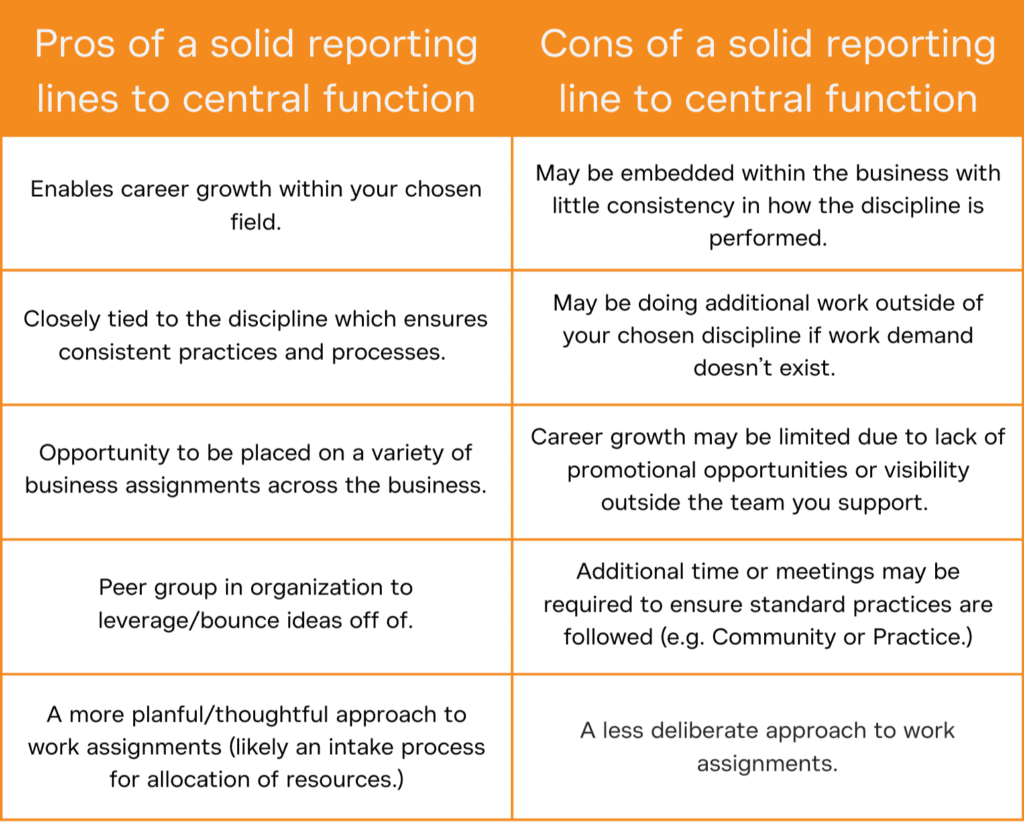When designing an organization, one common issue that arises is matrix reporting. When implemented effectively, matrix reporting serves as a powerful linkage, connecting work done in multiple parts of the organization. This linkage is essential for addressing issues that traditional structural hierarchies may not be able to solve.
We frequently work with clients to evaluate the trade-offs of solid versus dotted line reporting. There is no perfect structure, but you can make decisions to optimize the desired outcomes of your structure. There are several key elements you’ll need to consider for matrix reporting to work well for your organization.
Determining Reporting Lines
When deciding where to place solid or dotted reporting lines in a matrix structure, several factors need to be considered:
Who determines the work priority?
Work prioritization typically stems from the solid line reporting relationship. This may be prioritization at the highest level with more tactical work requests coming from both the dotted and solid line leaders. Make it very clear who has the final say on work prioritization.
What is the maturity level of the centralized function?
The maturity level of the centralized function can dictate whether a solid or dotted line is required. A mature discipline may be well suited for a dotted line relationship, allowing the solid line to sit within the business. This allows the business leaders to own and prioritize their work themselves, using a standard set of processes, tools or methodology. If the central function isn’t mature yet, nor the discipline widely used, a solid line may be required until the capability is more prolific.
Who ultimately determines performance evaluation and developmental needs?
Determining where the performance discussion occurs, and developmental opportunities are managed is crucial. If the central function is responsible for performance goals and evaluation, as well as developmental opportunities, then the solid line likely makes more sense there. Of course, dotted-line leaders would have input into these, but the decision falls on the solid line leader.
Where are the career path opportunities?
Like performance and developmental opportunities, career path opportunities are another key factor. In the PMO example, there are likely more growth opportunities in a central function, providing broader visibility and variety or are there more career path opportunities being embedded within the business function.
Whose responsibility is it anyway?
The burden for clarity resides with the leaders managing in a matrix reporting relationship. When leaders don’t take the time to agree on and communicate the following few things, the burden to figure it out moves to the employee:
- Who will give day-to-day direction?
- Who will decide the priority if there is a conflict in direction?
- Who will provide the performance reviews?
- Who will be discussing developmental opportunities?
- Who is the employee’s advocate for developmental assignments and promotional opportunities?
Pros and Cons

Set the Groundwork for Success
Whether you are setting up new matrix reporting relationships, or working through well-established ones, take the time to ensure the above questions are answered and clear. And above all else, keep the lines of communication open between the leaders and with the employee.





